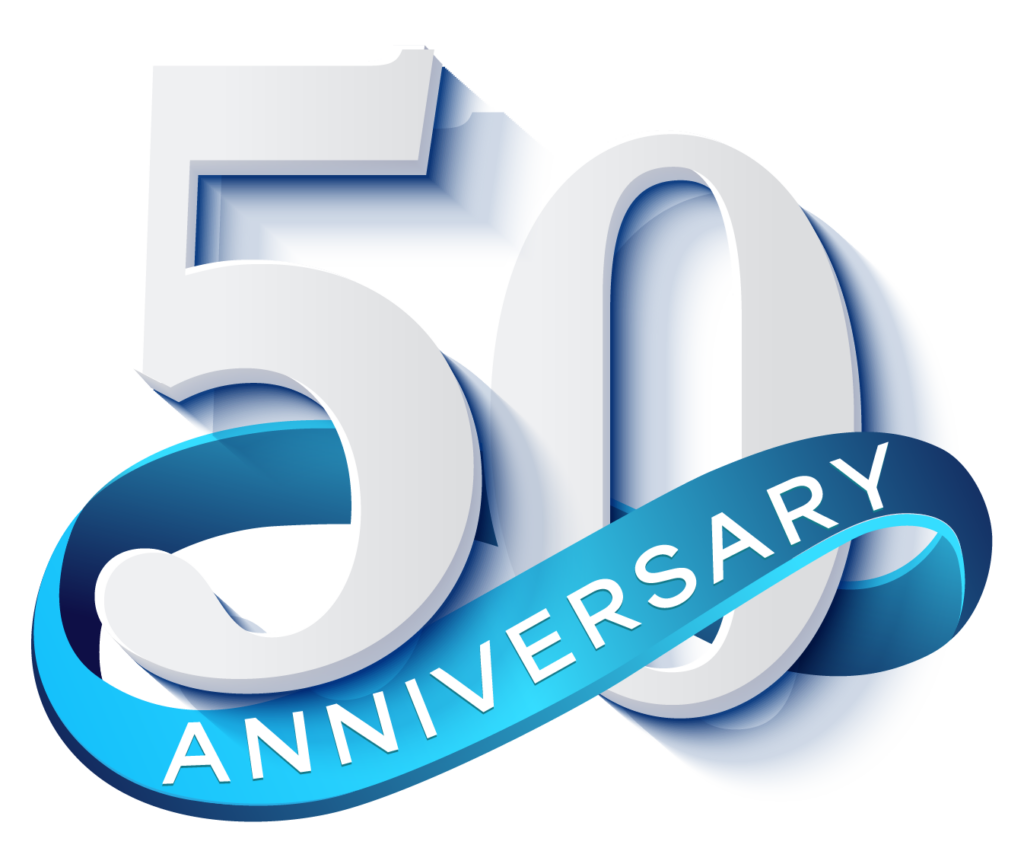Strong communication is the backbone of small teams, as it helps streamline processes, ensures clarity, and nurtures collaboration. When communication is strong, one will find all other team members are more aligned, motivated, and engaged. Most teams just need the tools that help them meet the demands of their environment and drive them forward.
We have researched 10 practical communication team-building activities that can elevate your team’s dynamics and engagement. Do you want to see the profound impact that communication team-building games and activities, as well as leadership development, can have on your organizational growth?
Personalysis Tests Help You Improve Communication
1. Coffee Maker Questions
Casual conversations, such as those around a coffee machine or during breaks, are often underestimated in their power to build relationships. These informal moments allow people to connect on a personal level, fostering trust and camaraderie that can translate into stronger professional relationships.
To harness this dynamic in communication team-building activities, try replicating that relaxed, conversational atmosphere during meetings or team breaks by introducing light-hearted and thought-provoking questions.
Questions to Ask
For example, ask questions like:
- “What’s your favorite childhood memory?” This encourages nostalgia and often reveals insights about a person’s background and values.
- “If you could instantly master any skill, what would it be?” This inspires creativity and can highlight aspirations and hidden talents.
Such questions create a low-pressure environment where individuals feel comfortable opening up. These discussions promote empathy by encouraging people to see one another beyond their roles or job titles, nurturing a culture of understanding and mutual respect.
Tips for Implementation
Ultimately, according to the Harvard Business Review, these efforts help humanize the workplace, strengthen interpersonal connections, and contribute to a more cohesive and collaborative environment. So here’s how you can implement Coffee Maker Questions.
- Make it Routine: Dedicate a few minutes at the start of a meeting or during a break for these light interactions. Consistency helps establish it as a valued part of team culture.
- Mix It Up: To keep the conversations fresh and engaging, incorporate tools like apps such as TableTopics or Icebreaker Questions. These resources offer a wide variety of prompts, ensuring that the questions remain novel and inclusive.
- Adapt to the Team’s Vibe: Pay attention to the team’s preferences and dynamics. Choose questions that are light and engaging while respecting individual boundaries.
2. Barter Puzzle
The Barter Puzzle is a hands-on exercise designed to challenge and strengthen team collaboration. Here’s how it works: divide your team into smaller groups and provide each group with a jigsaw puzzle. The twist? Some pieces from each group’s puzzle have been intentionally swapped with those of another group. The setup of these communication team-building activities requires the teams to interact, negotiate, and exchange puzzle pieces to complete their task.
Why It Works
This communication team-building activity is more than just a game; it’s a practical simulation of real-life workplace dynamics. In organizations, achieving goals often demands cooperation across departments, each with their own objectives, resources, and priorities. The Barter Puzzle mirrors this environment, offering participants the opportunity to:
- Develop Negotiation Skills: Teams must strategize and communicate effectively to strike mutually beneficial deals, simulating the give-and-take required in professional negotiations.
- Enhance Problem-Solving: As they work through the challenge, participants learn to think critically about their approach, fostering creative solutions.
- Foster Collaboration: Success hinges on teamwork, both within the group and between groups. This encourages active listening, shared leadership, and trust-building.
- Promote Perspective-Taking: Teams must understand and appreciate the needs of others to facilitate cooperation, helping individuals see beyond their immediate goals.
Implementation Tips
The Barter Puzzle is particularly valuable for highlighting the importance of cross-functional collaboration even in straightforward nonverbal communication games. Teams often operate in silos, yet modern workplaces demand agility and partnership across roles while engaging team members. Here’s how to ensure a successful Barter Puzzle session:
- Select Puzzles Wisely: Choose puzzles of similar size and complexity to maintain a level playing field. Avoid overly intricate designs that might frustrate participants.
- Define Rules Clearly: Establish guidelines for trading, such as time limits or conditions for barter. This adds structure to the activity while leaving room for creativity.
- Facilitate Reflection: After the activity, debrief with the group. Discuss what strategies worked, where challenges arose, and how the skills practiced relate to workplace scenarios.
- Incorporate Fun: While the activity is designed to teach, keeping the atmosphere light-hearted ensures greater engagement and enjoyment.
3. Shipwrecked
Shipwrecked is an engaging team exercise where participants are stranded on a deserted island and must select five out of 20 potential items to aid their survival. This scenario encourages critical thinking, prioritization, and collaboration as teams debate and justify their choices. It promotes the value of diverse viewpoints, enhancing decision-making and communication as team members articulate their reasoning and listen actively to others.
Ultimately, Shipwrecked fosters teamwork and highlights the importance of working together to solve complex problems, helping participants develop valuable skills that are directly applicable in the workplace.
How to Implement Shipwrecked
The Shipwrecked activity mirrors situations in professional settings where prioritization, collaboration, and resource allocation are critical. Teams often face competing priorities, limited resources, and tight deadlines. To create a dynamic and impactful experience, follow these steps:
- Set the Scene: Introduce the scenario with vivid storytelling to immerse participants in the survival challenge. For example, describe the island, the shipwreck, and the urgency of their predicament.
- Provide the List: Share the list of 20 items, which might include items such as a flashlight, fishing net, first-aid kit, knife, or matches. Ensure a mix of obviously useful and less straightforward options to spark debate.
- Encourage Team Debate: Allow teams time to discuss and agree on their top five items. Encourage them to consider various survival factors, such as immediate safety, long-term sustainability, and group dynamics.
- Facilitate Presentations: Have each team present and justify their choices. This not only promotes public speaking but also provides an opportunity for other teams to learn from different strategies.
- Debrief: Conclude with a reflection session to discuss the decision-making process, challenges faced, and the skills developed during the activity.
Add a Creative Twist
To heighten the challenge and better simulate real-world pressure, consider these variations:
- Time Constraints: Limit the time for discussion and selection to create urgency, requiring quicker decision-making.
- Surprise Challenges: Midway through the activity, introduce unexpected events, such as a storm or a need to leave the island earlier than planned. This forces teams to adapt and revise their choices.
- Limited Communication: Restrict verbal communication or impose other constraints to simulate real-world communication barriers, such as working across different time zones or cultural divides.
The Personalysis personality assessment is an effective tool for enhancing team dynamics by recognizing each member’s strengths and differences. We provide teams with insights to boost collective performance, whether in new, hybrid, virtual, or established settings. Our assessment offers detailed personality insights to encourage alignment with goals, inclusivity, and proactive problem-solving.
For over 50 years, Personalysis has improved teamwork through a science-backed assessment that highlights each member’s strengths, motivators, and needs. Our Individual and Team Profiles clarify group dynamics, and our custom Teaming Together workshops address specific team needs. Unlock your team’s potential by scheduling a free consultation with us.
Personalysis Tests Help You Improve Communication
4. Just Listen
The Just Listen activity is a powerful exercise designed to improve active listening and foster empathy within teams. By focusing solely on understanding others without interruption, participants learn the importance of giving undivided attention, which enhances collaboration, strengthens relationships, and improves conflict resolution.
These kinds of communication team-building activities promote patience and focus, encourage empathy by fostering emotional connections, and improve communication dynamics by making team members more attuned to each other’s perspectives. Ultimately, it builds trust and openness, creating a solid foundation for high-performing teams.
How the Activity Works
Just Listen highlights a crucial yet often neglected skill in team dynamics. In today’s workplace, distractions and multitasking can dilute the quality of interactions, leading to misunderstandings or disengagement.
- Pair Participants: Divide the group into pairs and assign one participant as the speaker and the other as the listener for the first round.
- Choose a Prompt: Provide prompts to guide the discussion, such as:
- “Describe a recent challenge you faced and how you handled it.”
- “Share a personal or professional goal you’re working towards.”
- “What’s something you’re currently excited about?”
- Set Rules for Listening: Emphasize that listeners should:
- Avoid interrupting, offering advice, or sharing their own experiences.
- Focus on the speaker’s words, tone, and emotions.
- Maintain open and nonjudgmental body language.
- Reflect and Switch Roles: After a set time (e.g., 3–5 minutes), have the participants switch roles. At the end, encourage both to reflect on how it felt to be deeply listened to and to listen without speaking.
Tips for a Meaningful Experience
For those interested in deepening their understanding of active listening techniques, explore resources like MindTools, which provide actionable strategies to practice and refine these skills. You could also implement the following:
- Select Thoughtful Prompts: Tailor prompts to the team’s context. For example, use workplace-focused topics during professional development sessions or more personal questions for team bonding exercises.
- Encourage Honest Sharing: Create a safe space where participants feel comfortable opening up. Assure them that what they share will remain confidential.
- Facilitate a Debrief: After the activity, gather the group to discuss their experiences. Questions like “What did you notice about your partner’s emotions or body language?” and “How did it feel to be truly listened to?” can spark insightful conversations.
5. Circle Story
The Circle Story activity is a dynamic exercise that fosters collaboration and creativity within teams by having each member contribute one sentence to a collectively created story. While simple in concept, these kinds of communication team-building activities challenge participants to maintain coherence, balance creativity with group direction, and seamlessly integrate diverse ideas.
These kinds of fun team-building activities boost creativity, improve focus and adaptability, and promote collaboration by encouraging a balance between individual contributions and collective goals. Additionally, it can improve communication skills across the entire group as participants learn to express ideas concisely while aligning with the evolving narrative.
How It Works
Shared storytelling taps into the human desire for connection and meaning. The research found in the Handbook of Organizational Creativity highlights how collaborative narrative-building strengthens group cohesion by fostering collective creativity. As participants contribute to a shared outcome, they develop a sense of belonging and mutual respect, key elements in high-functioning teams.
- Set the Scene: Begin with a prompt or opening sentence to give the story a starting point. For example:
- “It was a quiet night until the sound of footsteps echoed in the hallway.”
- “The team’s biggest challenge began when the power suddenly went out.”
- Form a Circle (or Virtual Equivalent): Arrange participants in a circle or designate an order for contributions in virtual settings.
- Build the Story: Each participant adds one sentence to the story, building on what was said previously. Encourage creativity, but remind participants to maintain some logical flow.
- Continue Until Conclusion: The story ends when it naturally resolves or after a set time or number of rounds.
- Variations to Keep It Fresh:
- Genre Swap: Change the genre mid-story to keep participants on their toes (e.g., from mystery to comedy).
- Timed Contributions: Limit each participant’s time to contribute their sentence, simulating high-pressure decision-making.
- Group Edit: After completing the story, have the group collaboratively refine or expand it, practicing constructive feedback and editing skills.
Tips for Success
The Circle Story activity is especially beneficial in scenarios that demand creative collaboration, such as project planning, brainstorming sessions, or team-building retreats. By practicing the art of aligning individual creativity with group objectives, teams can translate these lessons into their day-to-day work, enhancing cohesion and innovation.
- Set Ground Rules: Encourage respect for others’ contributions. Remind participants that the story should be built constructively rather than taking jarring or disruptive turns.
- Use Themes or Constraints: For added structure, specify a theme (e.g., mystery, adventure, workplace challenge) or constraints (e.g., certain words or concepts must appear).
- Facilitate Reflection: After the exercise, discuss how the story evolved and what made the collaboration successful. Questions like “What helped maintain coherence?” and “How did you integrate diverse ideas?” can spark valuable insights.
Personalysis Tests Help You Improve Communication
6. Two Truths and a Lie
Two Truths and a Lie is a fun and effective icebreaker that fosters interpersonal communication, encouraging participants to engage and interact with one another. These kinds of communication team-building activities help uncover shared interests and quirks, often revealing surprising connections. The game builds trust and rapport by allowing team members to share personal details in a lighthearted setting, creating a sense of vulnerability and mutual understanding.
Additionally, it promotes active listening skills as participants carefully analyze each statement, using deductive reasoning to identify the lie.
How to Play
This simple yet effective communication activity creates a lighthearted atmosphere that encourages openness and helps each team member learn more about one another.
- Introduce the Game: Explain the rules clearly. Each participant will think of two true statements and one false statement about themselves and share all three with the group.
- Take Turns Sharing: Participants share their three statements in any order, and the group works together to guess which one is the lie.
- Reveal the Truth: After everyone has made their guesses, the speaker reveals which statement was false, often leading to surprising or funny insights.
Tailoring the Activity to Professional Settings
To maximize relevance in workplace settings, consider these adaptations:
- Career-Focused Statements: Ask participants to share career-related truths and lies, such as achievements, unusual job experiences, or aspirations. For example:
- “I once gave a presentation to over 1,000 people.”
- “I started my career as a graphic designer.”
- “I invented a tech gadget that is sold nationwide.”
- Team-Specific Themes: Align the game with a team’s interests or industry. For instance, in a tech team, statements could involve favorite apps or tech milestones.
- Hybrid Virtual Play: For remote teams, use breakout rooms to play in smaller groups or host the activity in a shared document or virtual whiteboard for asynchronous engagement.
Tips for a Smooth Experience
Two Truths and a Lie is versatile and can be used in a variety of scenarios, from onboarding sessions and team-building retreats to energizing workshops and meetings. By blending fun with discovery, the activity sets the stage for a more connected, collaborative, and trusting team dynamic.
- Model the Game: Start with your own examples to help participants understand the format and feel comfortable.
- Encourage Creativity: Prompt participants to think of unique or unexpected statements to keep the game engaging.
- Keep it Inclusive: Ensure that the activity remains lighthearted and non-intrusive. Avoid pressuring participants to share overly personal details.
Every team has its own unique dynamics, and understanding these is key to unlocking their full potential. Instead of defining your personality with a single label or type, the Personalysis personality assessment provides a full picture of your personality in different situations. You’ll get a clear view of 3 distinct and separate aspects of your personality.
With the Personalysis Profile, you’ll learn how to:
- Develop essential self-confidence for your well-being, enabling you to face challenges with grace and conviction.
- Enhance communication skills, fostering better teamwork and minimizing misunderstandings in both work and personal relationships.
- Actively embody your purpose and passion, allowing you to align your actions with your core values and achieve impactful results.
By tapping into the full spectrum of your personality, you’ll develop a deeper understanding of yourself and those around you, enhancing your ability to collaborate effectively and achieve success as part of a team.
Personalysis Tests Help You Improve Communication
7. Human Knot
The Human Knot is a classic team-building exercise that combines physical activity with problem-solving and collaboration. Participants form a circle, grab hands across the group, and work together to untangle themselves without letting go. These kinds of communication team-building activities foster strategic yet creative thinking as teams analyze and decide on the best actions, while clear communication is essential for coordinating movements.
The activity encourages teamwork, trust, and a sense of camaraderie, as success depends on collective effort and mutual support. Additionally, it helps break down interpersonal barriers by encouraging participants to step out of their comfort zones.
How It Works
The Human Knot is more than a game; it’s a microcosm of teamwork in action. These kinds of communication team-building activities mirror real-world workplace dynamics where collaboration, communication, and adaptability are critical. By untangling the knot, participants learn to trust one another, appreciate diverse ideas, and recognize the value of working together toward a shared goal.
- Form a Circle: Have participants stand shoulder to shoulder in a circle. Ensure the group size is manageable (6–12 people works best). Larger groups can be split into smaller circles.
- Grab Hands: Instruct participants to reach across the circle and grab the hands of two different people. No one should be holding hands with someone standing directly next to them.
- Untangle the Knot: Without releasing hands, the group must work together to untangle themselves into a single circle. This may involve stepping over arms, turning, twisting, or reconfiguring positions.
- Success Criteria: The activity is complete when the circle is untangled, or participants agree they’ve reached the best configuration possible given the complexity of the knot.
- Variations for Added Engagement:
- Timed Challenge: Introduce a time limit to add urgency, prompting quicker decision-making and teamwork.
- Blindfolded Variation: Have some participants wear blindfolds, relying on others’ instructions to navigate the knot.
- Cross-Team Competition: If working with multiple groups, challenge them to see who can untangle their knot the fastest, fostering friendly rivalry.
Practical Tips for Implementation
- Set Expectations: Before starting, explain the purpose of the activity and reassure participants that it’s meant to be a fun and collaborative challenge, not a competition.
- Be Mindful of Comfort Levels: Some individuals may feel uneasy about physical proximity or touching hands. Always check for comfort and offer an alternative activity if needed.
- Facilitate Inclusivity: Encourage participants to ensure everyone has a voice in the process, especially quieter team members.
- Observe and Support: As a facilitator, step back to let the team solve the problem but be ready to offer gentle guidance or suggestions if they get stuck.
- Safety and Accessibility Considerations: While the Human Knot is a low-risk and fun team-building activity, it’s important to prioritize participants’ comfort and safety. Ensure physical safety by encouraging careful movement and avoiding excessive pulling or twisting of hands.
8. Egg Armor Challenge
The Egg Armor Challenge is a hands-on, problem-solving activity where small teams must design a structure to protect a fragile egg from a high drop using limited materials. These kinds of communication team-building activities encourage creativity and innovation as teams develop unique ways to absorb the impact and protect the egg. It fosters teamwork and collaboration, requiring effective communication and task division.
Additionally, it enhances project management skills by balancing time, resources, and design quality. Critical thinking is key as teams analyze materials and experiment with designs, while resilience and adaptability are tested, as failure is seen as an opportunity for learning and improvement.
How It Works
The Egg Armor Challenge is an engaging and fun team-building activity that combines creativity with problem-solving in a light-hearted yet competitive environment.
- Form Teams: Split participants into small groups (usually 3-5 people per team). This allows for a collaborative environment where different ideas can be shared and tested.
- Provide Materials: Give each team a set of basic materials that can include:
- Paper (newspaper, construction paper, etc.)
- Tape (masking tape, Scotch tape, or duct tape)
- Straws, rubber bands, or plastic wrap
- Popsicle sticks, cotton balls, or cardboard
- Scissors (for cutting materials)
- The key here is to limit the resources, encouraging teams to think outside the box and get creative.
- Design and Build: Teams work together to design and build their “egg armor.” They may choose to build a protective cushion, a sturdy structure, or a combination of both. The structure must ensure the egg survives a fall, so factors like shock absorption and durability are important to consider.
- Test the Structure: Once the designs are complete, each team drops their egg from a predetermined height (e.g., from a table or ladder). This tests how well the armor withstands impact.
- Evaluate Results: After all the eggs have been dropped, check which eggs survived the fall. If multiple eggs survive, you can have a “most creative design” or “most durable structure” category for additional fun and recognition.
Variations and Tips for Success
Communication games like these promote healthy competition, with teams vying for various awards such as “most successful design” or “most creative solution,” fostering camaraderie and a sense of accomplishment, no matter the outcome. Here’s how you can vary it a little.
- Change the Height: Experiment with different drop heights to increase the challenge. A higher drop will require stronger protection and more thoughtful design.
- Use Different Materials: For added complexity, you can provide a wider range of materials or even surprise teams with additional elements midway through the challenge.
- Add Time Constraints: Set a time limit (e.g., 15-20 minutes) to create urgency and push teams to think faster and work efficiently.
- Provide Constraints: Challenge teams by restricting the size of the structure or limiting the number of materials they can use. These limitations can make the activity more difficult, simulating real-world resource constraints.
- Evaluate Beyond Survival: While the primary goal is to protect the egg, you can also evaluate designs based on creativity, sustainability (how many eggs can survive), or how well the team worked together.
9. Match Quest
Match Quest is a fun and interactive icebreaker that encourages teamwork and laughter. In this game, participants wear the name of a famous pair on their backs, such as “Superman” and “Lois Lane,” and ask yes/no questions to figure out their identity and find their matching pair. It fosters team interaction, providing a relaxed environment to engage with others and break the ice in larger groups.
These kinds of communication team-building activities also enhance communication skills by promoting clear questioning and active listening while boosting problem-solving abilities as players use deduction and creativity to uncover their identities.
How It Works
The playful format encourages individuals to step out of their comfort zones and approach others more casually and informally. Here’s how to use this type of engagement to spark new connections, build trust, and promote inclusivity.
- Prepare the Cards: Before the game begins, write the names of famous pairs or well-known duos on cards. These can be fictional characters, celebrities, or even popular objects that are often paired together. Examples include:
- “Salt” and “Pepper”
- “Tom” and “Jerry”
- “Sherlock” and “Watson”
- “Peanut Butter” and “Jelly”
- “Sun” and “Moon”
- Stick the Cards: Attach a card with the name of one half of the pair to each participant’s back. Ensure that no one sees their own card, creating a sense of mystery.
- Start Asking Questions: Players mingle and start asking yes/no questions to fellow participants to figure out who they are. For example, someone with “Tom” on their back might ask, “Am I a cartoon character?” or “Am I associated with a cat?” The goal is to ask questions that help narrow down their identity.
- Find Your Match: Once a player has figured out who they are, they must find the person wearing the matching card. For instance, if a player has “Tom” on their back, they need to find the person with “Jerry” and claim their match.
- Winning the Game: The first pair to identify each other and form their match wins the game! You can also recognize the next fastest pairs for fun.
Tips for a Successful Match Quest Experience
Match Quest is not just about identifying pairs; it’s about creating an environment where participants can let their guards down, get to know each other and enjoy a shared experience.
- Choose Relatable Pairs: To ensure that everyone can easily participate, pick pairs that are widely recognized and familiar to the group. Adjust the level of difficulty based on your team’s knowledge.
- Keep the Questions Fun: Encourage players to get creative with their yes/no questions, as this can lead to humorous interactions and memorable moments. For instance, a “Sherlock” might ask, “Do I wear a deerstalker hat?”
- Make It Time-Bound: Set a time limit to increase the energy and urgency of the game. For example, you could give teams 10 minutes to find their matches, which adds a bit of competitive excitement.
- Use Variations for Larger Groups: If you have a very large group, you can break the participants into smaller teams and have them compete against each other to find their matches. Alternatively, make it a race where the last few players to find their match have to complete a fun challenge (like doing a funny dance or answering a quirky question).
10. Action Reverse
Action Reverse is a high-energy, brain-teasing game that challenges participants’ focus, reflexes, and quick thinking. In this game, players must perform the opposite of simple commands, like stopping when told to “walk,” which becomes increasingly difficult as the game progresses.
These kinds of communication team-building activities boost focus and attention, test reflexes and coordination, and encourage quick thinking by requiring players to swiftly process and react to commands.
How It Works
Action Reverse works particularly well in team-building or office settings because it quickly breaks the ice, engages everyone, and introduces a fun challenge that’s outside of the usual work environment.
- Choose a Leader: One person, known as the “leader,” is responsible for giving the commands. The leader can stand in front of the group or walk around, making the game more dynamic.
- Give Commands: The leader gives simple, everyday commands like “walk,” “sit,” “clap,” “jump,” or “spin.”
- Do the Opposite Action: Players must immediately do the opposite of what’s being said. For example:
- If the leader says “walk,” players must stop.
- If the leader says “sit,” players must stand up.
- If the leader says “clap,” players must stop clapping.
- The key to the game is staying sharp and responding without hesitation, as any delay or misstep results in a mistake!
- Elimination or Continuation: The game can continue until someone makes a mistake, such as responding incorrectly to a command or hesitating too long. Depending on the group size and the desired pace, you can either have a single winner or restart the game multiple times with new leaders.
The game also promotes agility and mental flexibility, as players must rapidly switch between opposites. Beyond the mental challenge, it fosters laughter and camaraderie, enhancing team morale in a fun, low-pressure environment.
Tips for a Successful Action Reverse Experience
Communication team-building activities like these are the ideal activity for a quick energy boost, helping participants clear their minds and get ready for more serious tasks after a burst of activity. The game’s pace is also flexible, allowing for bursts of high energy or slower, more deliberate rounds, depending on the group’s mood and objectives.
- Start Slow, Then Speed Up: If you have beginners or people who are unfamiliar with the game, start with slower-paced commands and gradually increase the speed. This allows participants to build confidence before the game gets faster and more challenging.
- Use Physical Commands for Added Fun: In addition to simple commands like “sit” or “walk,” try adding physical tasks such as “touch your toes,” “spin around,” or “jump.” The more varied the commands, the more fun and unpredictable the game becomes!
- Incorporate Group Dynamics: To make the game even more engaging, have players perform the actions together, in unison. For example, when the leader says “clap,” everyone must stop clapping at the same time. It can add an element of teamwork and synchronization.
- Keep It Lighthearted: The key to Action Reverse is fun, so keep the atmosphere light and playful. Celebrate the moments when someone gets the wrong answer with good-natured humor to maintain a positive vibe.
Top 10 Communication Activities for Small Teams: Final Thoughts
Incorporating communication team-building activities into your organizational strategy is a powerful way to foster a more cohesive, communicative, and productive work environment. These activities go beyond simple icebreakers; they are designed to address various aspects of team dynamics, from improving interpersonal relationships to enhancing problem-solving and collaboration skills.
Personalysis hopes that by engaging in these hands-on, interactive team-building exercises, team members can build trust, develop stronger communication patterns, and learn to work more effectively together.
Gain insights into individual and team dynamics. Identify communication styles, motivations, and stress behaviors. Understand and leverage your team’s diverse strengths. Enhance collaboration and resolve conflicts more effectively. Build stronger team cohesion and boost productivity.
Learn How Personalysis Can Improve Communication In Your Organization Today!




